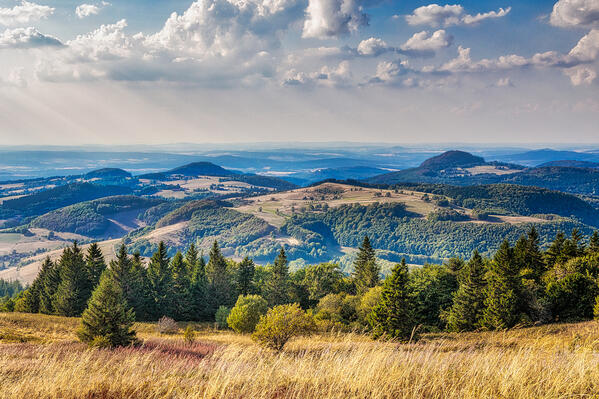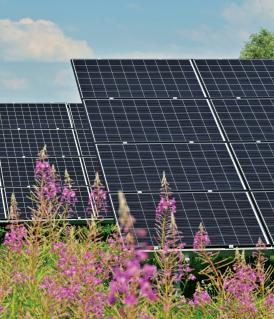Essential Diversity

Germany is a country with great biodiversity and home to around 72,000 species of animal, plant and fungus. Protecting the foundations of life is an official national objective, a requirement added to the Basic Law The Basic Law The Basic Law determines that Germany is a constitutional state: All state authorities are subject to judicial control. Section 1 of the Basic Law is of particular relevance. It stipulates that respect for human dignity is the most important aspect of the constitution: “Human dignity shall be… Read more › in 1994. 16 national parks National parks To a large extent the 16 national parks in Germany are located in the north of the country. They are all noteworthy for their unique nature and landscape and serve to preserve the natural diversity of rare plants and animals. The largest is the Schleswig-Holstein Mud Flats National Park Wattenmeer,… Read more › and 17 UNESCO biosphere reserves, all very different in character, protect the environment and nature between the North Sea and the Alps. There are also thousands of nature reserves.
How is Germany involved in international conservation efforts?
Germany is a signatory to the most important international biodiversity conventions and to numerous international agreements and programmes aimed at protecting nature. By ratifying the UN Convention on Biological Diversity, the governments of 196 countries have committed themselves to protecting the diversity of life on Earth.
What is the status quo in terms of biodiversity in Germany?
The threat level of roughly 40 percent of Germany’s native species has been ascertained so far. Almost a third of these species are at risk of extinction or severely endangered. Around three percent have already been classified as extinct. The measures put in place to address this include minimising the harm caused to habitats by the construction of homes and roads, as well as keeping pollutants to a minimum, such as those due to intensive farming and the excessive use of fertilisers.
National Biodiversity Strategy 2030 (NBS 2030)
Through its NBS 2030, Germany is implementing the Global Biodiversity Framework (GBF) at the national level. The GBF is a global agreement reached at the UN Biodiversity Conference in Montreal in 2022.
The NBS 2030 aims to halt the destruction of biodiversity and to protect and restore nature. In all, it defines 64 targets in 21 fields of activity and is backed up by concrete measures and measurable indicators.
A first action plan for the period until 2027 provides among other things for improved legal regulations to make it easier for cities to plant new and protect existing trees. A funding programme for the protection of floodplains is to be extended and the expansion of renewable energies better aligned to species protection.
How does Germany protect the seas?
In the area of marine protection, the Federal Government Federal Government The Federal Government and cabinet is made up of the Federal Chancellor and the Federal Ministers. While the Chancellor holds the power to issue directives, the ministers have departmental powers, meaning that they independently run their respective ministries in the framework of those directives… Read more › ’s priorities are to step up the fight against pollution, preserve biodiversity and remove old munitions from the sea. It wants to continue long-term a programme to recover such old munitions from the North Sea and Baltic Sea, and to establish a federal competence centre where scientists, business and authorities can work together.
What else is Germany doing?
The action programme “Natural Climate Protection”, which helps protect forests, peat bogs and floodplains, is to be made permanent.
Insects play a vital role in ecosystems, yet their number and diversity have been declining dramatically for years. To combat the decline in insect populations, a comprehensive package of measures was adopted in 2021. These include improving protection for biotopes such as meadow orchards as habitats for insects.


